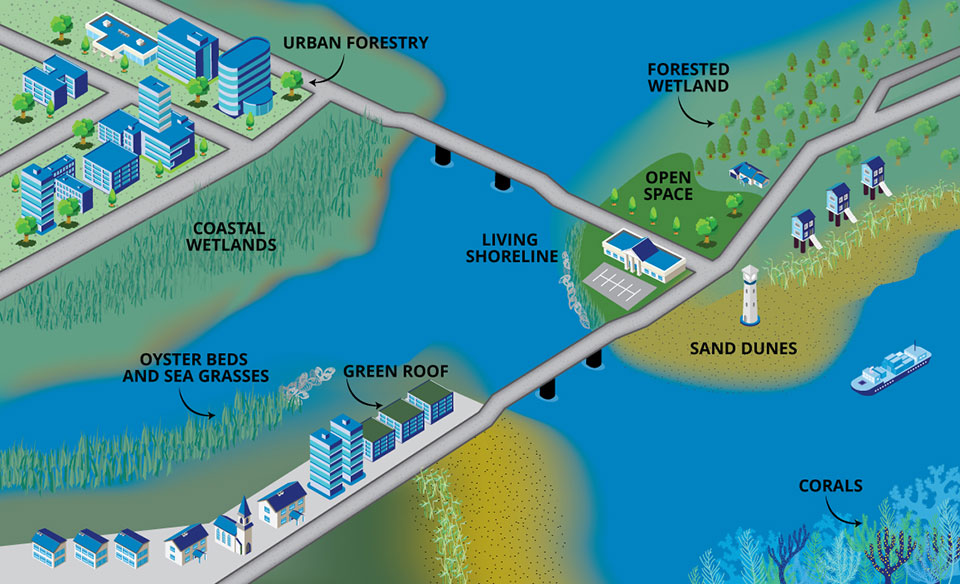Green Infrastructure Tools
Helping communities reduce extreme weather impacts using nature’s processes.

Green infrastructure practices provide ecological, economic, and societal benefits that play a critical role in making coastal communities more resilient to natural hazards.
Green infrastructure—natural and nature-based engineered systems that mimic natural processes—can be used to make communities better prepared and more resilient to extreme weather and coastal hazards that are becoming more frequent with climate change.
Green infrastructure can be something as simple as a vegetated swale that filters runoff from a parking lot or a large wetland that absorbs excess water that would otherwise flood community streets. In addition to hazard reduction, green infrastructure provides many benefits such as climate adaptation, heat reduction, and water quality enhancement. Incorporating green infrastructure into new and existing development can be economical while making communities safer, more environmentally sound, and aesthetically pleasing.
NOS’s Office for Coastal Management has a suite of products communities can use to better understand and implement green infrastructure approaches. These include:
- Information. Green Infrastructure Protective Services is an interactive animation that introduces this infrastructure and shows how it can protect communities from coastal storm impacts.
- Data. Coastal County Snapshots has a flood exposure component that provides county-level data via charts and graphs. Communities use this easy-to-understand data to learn about the economic and protective benefits of wetlands in locale.
- Guidance. Economics of Green Infrastructure Strategies for Climate Change showcases a Great Lakes study that assesses the costs and benefits of using green infrastructure for flood reduction. The framework can be applied in other communities.
- Training. Green Mapping Guide walks spatial analysts through a work plan, case studies, and templates for incorporating green infrastructure into their mapping efforts.
Additional green infrastructure products can be found on the Topics page on the Digital Coast website.
Get Social
More Information
Did you know?
From 1959 to 2005, floods caused 4,586 deaths in the U.S., while property and crop damage averaged nearly $8 billion a year from 1981 to 2011, according to the 2014 National Climate Assessment. In addition, the number of intense heat waves has increased in recent years, with 2011 and 2012 reporting triple the long-term average.
